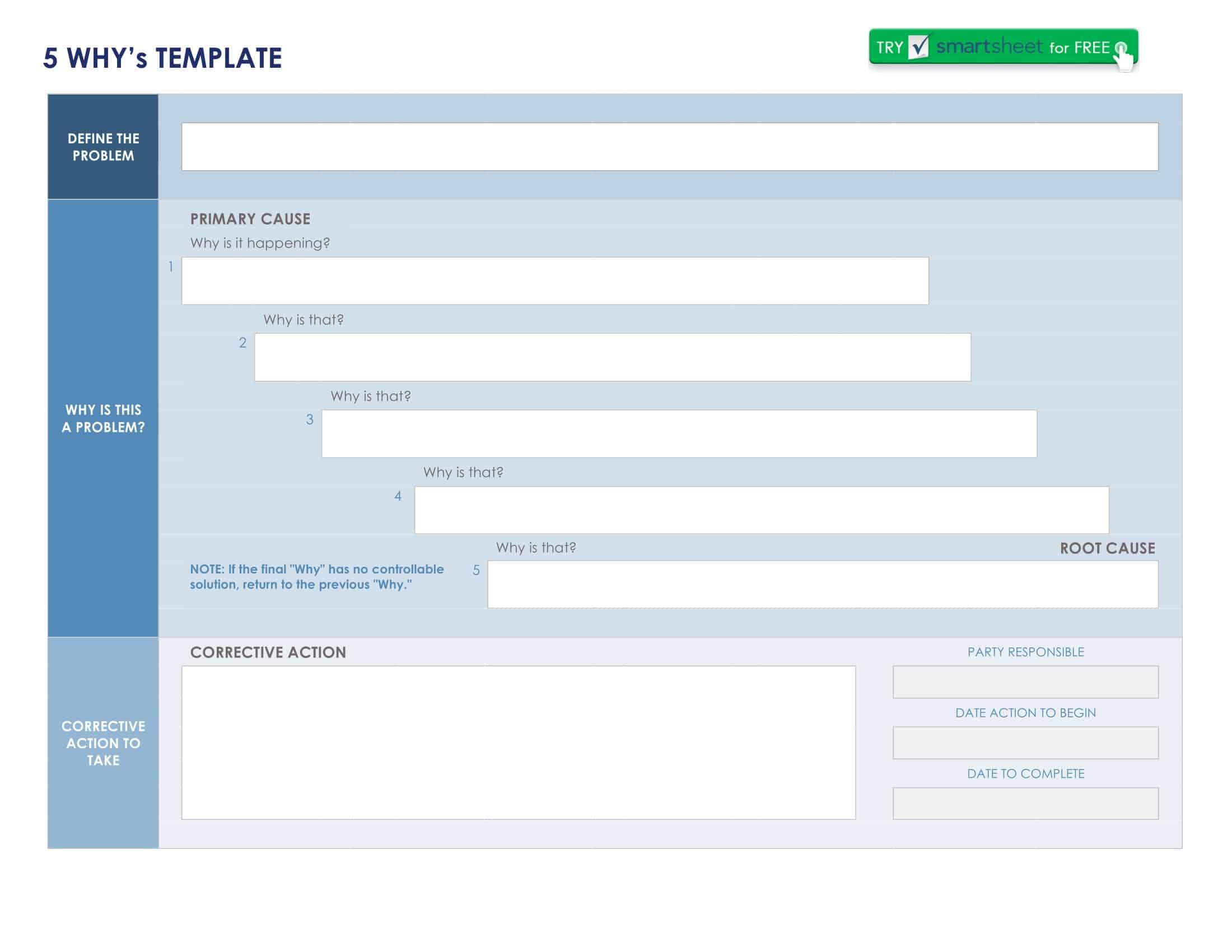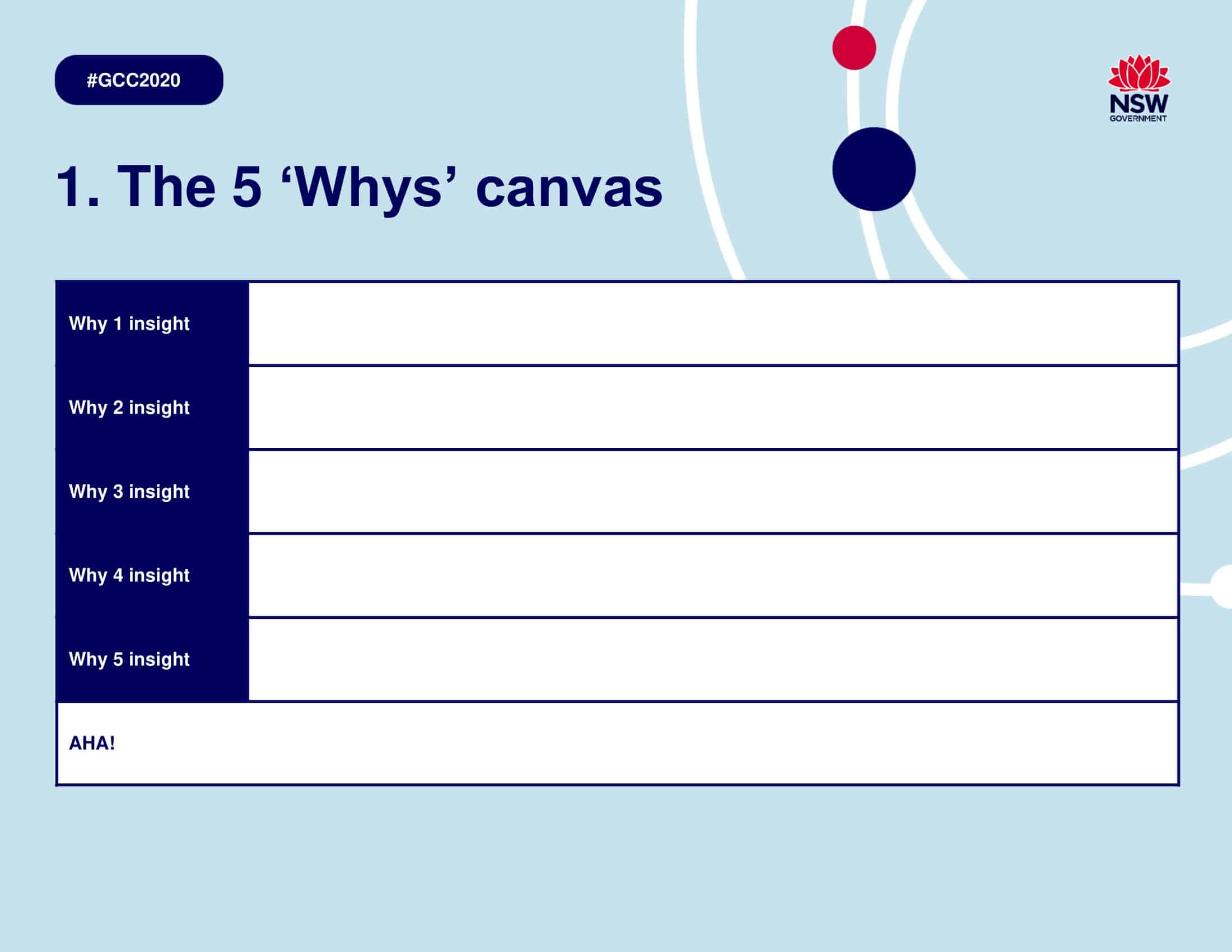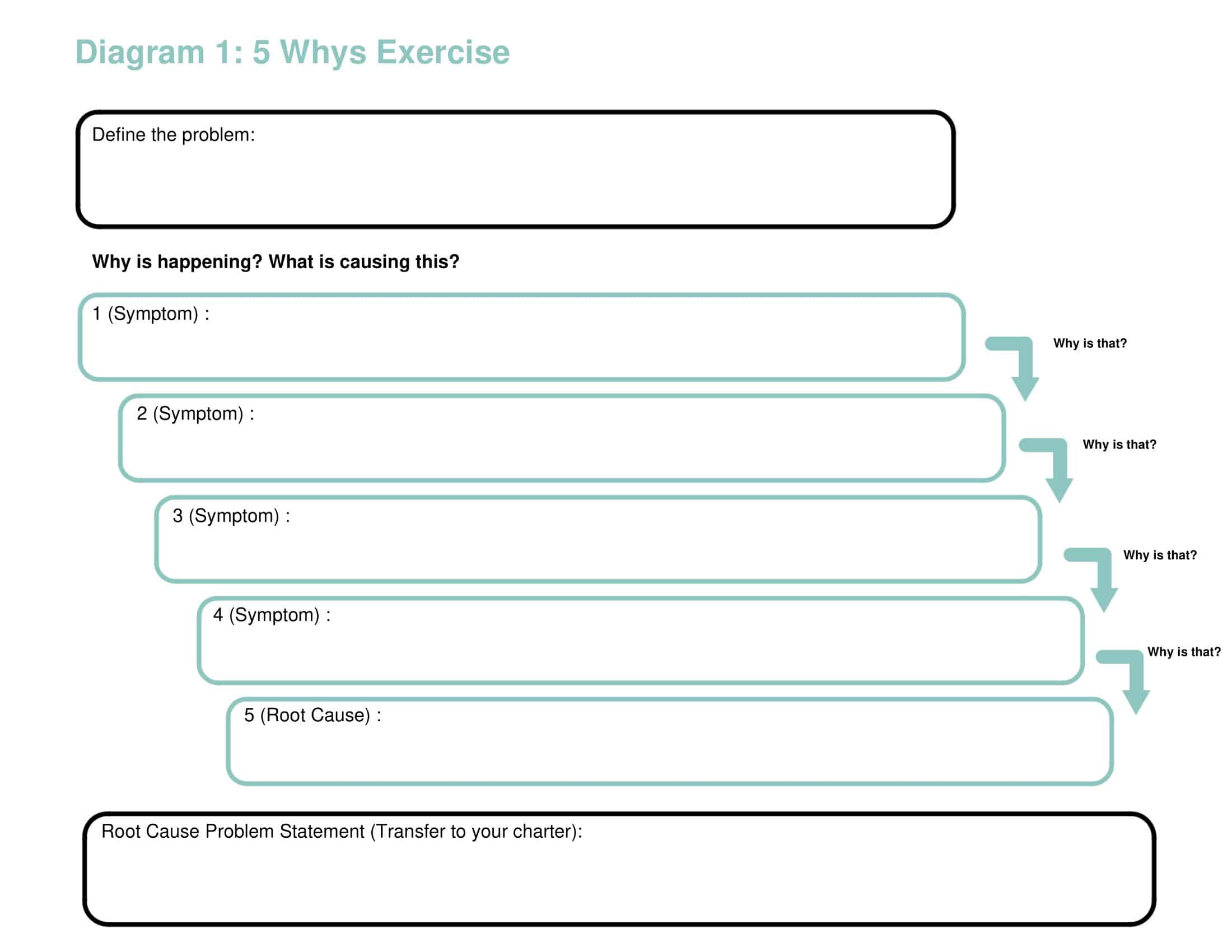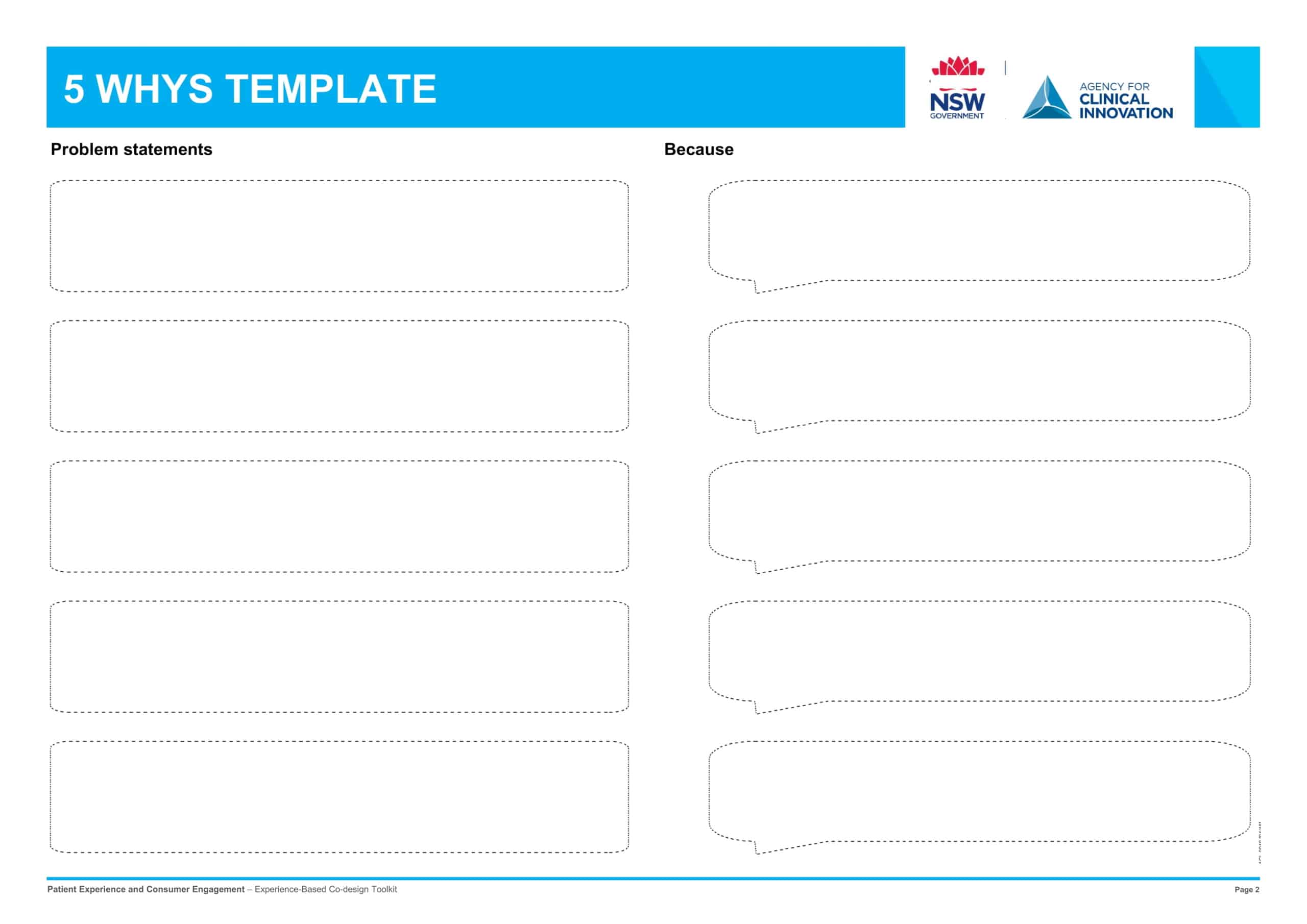In modern businesses, the question “Why did this happen?” is not enough on its own; because problems often have layer upon layer of root causes beneath the surface. That’s where the 5 Whys technique a method of getting to the root cause by asking the same question five times in a row comes into play. But drawing random boxes on a whiteboard can lead to omitting critical details.
Table of Contents
How Ready Made 5 Whys Templates Accelerate RCA

Drawing spontaneous boxes on a whiteboard or adding scattered notes to an email leads teams to skip critical details.TypeCalendar offers more than 45, 5 Whys Templates, making each step structured and repeatable.One template standardizes the question-and-answer flow; another filters the assumption with “Evidence/Data” columns; and automatic “Corrective Action” tracking in Excel versions prevents actions from being lost.Thus, root cause analysis becomes not only a meeting activity, but a sustainable part of the corporate culture.
5 Whys Templates
- Classic Manufacturing 5 Whys Template – For production line stoppages.
- IT Incident 5 Whys Worksheet – Log/metric fields added for server, software and service outages.
- Customer Service 5 Whys Card – Focused on front-office issues such as NPS decline or return increase.
- Lean KPI Tracker + 5 Whys Combo – An Excel version that connects KPI target deviations to an automatic 5 Whys stream.
All files come in Word, Google Docs, PDF and editable Excel/Google Sheets formats. PDF versions are printer-ready; Word & Docs files have unlocked text boxes for quick field note addition.Excel versions make it easier to track the solution plan with the “Corrective Action / Responsible / Target Date” fields in the side column.
Inside the Template Design
- Horizontal Flow: First box “Problem Description”, five “Why?” columns to the right; “Root Cause” and “Corrective Action” on the far right. Thus, the reader’s gaze flows from problem to solution in one line.
- Evidence/Data Line: Under each question there is a proof cell with a gray background, so that “prediction” and “measurement” do not mix.
- Color-Coded Action Tracking: In the Excel version, the cell turns green when the responsible person is assigned; it is yellow when the target date approaches and red when it passes.
- Version & Approval Block: Each revised analysis is versioned with a signature–date field; provides traceability in the audit.
Print & Formatting Tips
- PDF & Word: 120 g/m² matte paper prevents pen notes from scattering; it is easy to read in a meeting.
- Excel/Sheets: enter the event date in the format “YYYY-MM-DD”; the pivot table is ready to filter actor–action conflicts.
- SVG: Drag it into PowerPoint and repaint it according to your LOGO color palette; there is no loss of scale.
Integrate 5 Whys with Other RCA Tools
TypeCalendar also offers over 100 continuous improvement templates such as Ishikawa (Fishbone) Diagram, Pareto Chart, Failure Modes & Effects Analysis (FMEA).You can import your 5 Whys output to Fishbone and generate a “most frequent root cause” visualization with Pareto. Your reports look consistent because they are all designed to be compatible with the same style guide.
Combine 5 Whys + Other Root Cause Tools
TypeCalendar also offers over 100 continuous improvement templates such as Ishikawa (Fishbone) Diagram, Pareto Chart, Failure Modes & Effects Analysis (FMEA).You can import your 5 Whys output to Fishbone and generate a “most frequent root cause” visualization with Pareto. Your reports look consistent because they are all designed to be compatible with the same style guide.
Solve Root Causes in Minutes
Download the 45+ 5 Whys Template pack from TypeCalendar, gather your team in the meeting room and take the question “Why?” beyond the first answer.Uncover the real root cause, not the symptoms on the surface; record corrective actions with clear responsibilities and their history.The next time you have a similar issue, your roadmap to the solution will already be ready in the template.













































![Free Printable Credit Card Authorization Form Templates [PDF, Word, Excel] 1 Credit Card Authorization Form](https://www.typecalendar.com/wp-content/uploads/2023/06/Credit-Card-Authorization-Form-150x150.jpg)
![Free Printable Stock Ledger Templates [Excel,PDF, Word] 2 Stock Ledger](https://www.typecalendar.com/wp-content/uploads/2023/08/Stock-Ledger-150x150.jpg)
![Free Printable Financial Projections Templates [Excel, PDF] 3 Financial Projection](https://www.typecalendar.com/wp-content/uploads/2023/05/Financial-Projection-1-150x150.jpg)
